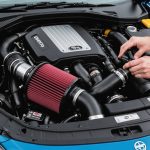Importance of Child Seat Placement
Ensuring child seat safety is crucial, particularly during side impact collisions, where the risk of injury is heightened. Statistics show that improper child seat placement can significantly increase the danger to young passengers. According to research, the chances of injury in side impacts are reduced by more than 30% when seats are correctly placed.
The optimal placement for child seats in minivans involves positioning the seat in the middle rear row. This location is statistically the safest due to its distance from point-of-impact areas, offering maximum protection from side collisions. The further away a seat is from the vehicle’s doors, the lower the risk of injury in a crash. Moreover, the middle rear position benefits from being surrounded on all sides by other seats, providing an additional buffer zone.
Also to read : Essential Tips for Maintaining Adaptive Cruise Control Sensors in Winter Weather
Vehicle design also plays a significant role in the effectiveness of child seats during collisions. Minivans tend to have spacious interiors with thoughtful safety features, supporting better placement of child seats. Designs that allow for more extensive crumple zones and reinforced side panels further enhance the safety of children in side impact crashes. Understanding these elements is essential for making informed decisions about the optimal placement for child seats, helping to safeguard young passengers effectively.
Guidelines for Child Seat Installation
Ensuring the secure installation of a child seat is essential for the safety of your child. This section aims to guide you through the primary considerations when installing child seats, focusing on understanding the proper installation and adhering to safety standards.
Additional reading : Mastering Airbag Sensitivity in Minivans: Essential Tips for Enhanced Safety and Protection
Types of Child Seats
Child seats come in various types, each designed for specific ages and weights. Infant seats, convertible seats, and booster seats cater to different stages of a child’s development. Choosing the correct type of seat is pivotal for both compliance with child seat guidelines and ensuring maximum safety. Making an informed decision is crucial to meeting safety standards.
Installation Basics
Following the correct method of installation is key to your child’s safety. Begin by thoroughly reading the manufacturer’s instructions tailored for your child seat model. Secure the seat using either the vehicle’s seat belt or its LATCH system. Ensure the seat does not move more than an inch side to side or forward once installed. Proper installation reduces risks significantly.
Common Installation Mistakes
Avoiding common mistakes can enhance safety. Parents often overlook the correct angle, causing the seat to tilt forward during a crash. Another frequent error involves not fastening the harness snugly, reducing its effectiveness. Always double-check the installation following these guidelines to prevent such errors and ensure your child’s protection.
Expert Recommendations and Best Practices
Ensuring child safety in vehicles is a concern shared by many parents. Pediatricians and child safety experts provide invaluable insights into seat positioning to enhance safety. They consistently recommend that car seats be installed in a rear-facing position for as long as possible, ideally until a child exceeds the seat manufacturer’s height and weight limits. According to child safety experts, this position offers superior protection for a child’s head, neck, and spine during collisions.
When it comes to transitioning between different seat types, there are clear best practices to follow. Experts advise that even when children outgrow rear-facing seats, they should shift to forward-facing seats with harnesses. Only once they surpass the harness specifications should they move on to booster seats. These transitions must always prioritize a child’s safety over convenience.
Regular checks are crucial to maintaining a seat’s security and fit. Child safety experts highlight that improper installations could compromise a seat’s effectiveness. They recommend periodic inspections to ensure seats remain securely anchored and free from wear. Adjustments might be necessary as children grow, ensuring that the straps are snug and at the correct height. By adhering to these best practices and expert insights, parents can make informed decisions, providing peace of mind and optimal safety on the road.
Minivan Safety Features and Comparisons
Minivans have become synonymous with family transportation, blending spacious interiors with advanced safety technologies. As families prioritize road safety, understanding minivan safety features is crucial.
Side Impact Ratings
Side impact safety is pivotal in assessing a minivan’s protection level during collisions. Comprehensive assessments are conducted, ensuring that vehicles withstand impacts from the sides efficiently. These assessments reveal insights into structural integrity, with some models showcasing superior defenses against side collisions. Rating systems evaluate parameters such as intrusion, impact force, and occupant protection, helping consumers make informed safety decisions.
Safety Innovations in Minivans
Modern minivans are outfitted with cutting-edge safety innovations. These include automatic emergency braking, blind-spot monitoring, and adaptive cruise control. Together, these technologies reduce accident risks and enhance driver assistance. Increasingly, minivans integrate driver attention alert systems that monitor fatigue levels, prompting breaks when necessary. This innovation significantly contributes to overall driving safety, ensuring fewer distractions and higher alertness levels.
Comparison of Popular Minivan Models
When comparing popular minivan models, certain vehicles stand out for their exceptional safety ratings. Key factors include comprehensive airbag systems, advanced crash avoidance mechanisms, and robust body frames. Some leading entries in the sector are assessed on everything from safety ratings to innovative offerings, providing consumers with a detailed comparative analysis that assists in selecting the most secure option for their family journeys.
Relevant Legal Regulations and Standards
Child safety laws play a crucial role in ensuring the safety of young passengers. These regulations vary by region, and it’s essential to be aware of them to maintain legal compliance. In the United States, for example, most states require child safety seats for children up to a certain age, height, or weight. The UK’s laws are based on height, while other regions, such as Australia, may have a different set of rules focusing on both age and weight.
Understanding and adhering to these child safety laws is vital. Failing to do so not only increases the risk of receiving fines and penalties but also endangers the child’s life in the event of a collision. Safety standards have been established to ensure that child car seats provide optimum protection. Regulations such as FMVSS 213 in the United States require that all car seats meet specified performance standards.
Legal compliance with these safety standards plays a critical role in reducing injuries. Child safety seats are designed to reduce fatality risks by up to 71% for infants and 54% for toddlers in accidents. By following these standards, you contribute to a safer traveling environment, making each journey less stressful and more enjoyable.
Insights from Child Safety Advocates
Child safety advocacy is crucial in enhancing parental understanding and ensuring the well-being of young passengers. Organisations dedicated to this cause provide important insights and research to guide best practices in child safety.
Advocacy Organizations
Several prominent organisations focus on child passenger safety. Their role involves developing guidelines, conducting campaigns, and lobbying for improved legislation. By integrating expert insights from these groups, families can make informed decisions about car seat safety, booster seat usage, and general travel protocols for children.
Recent Research Findings
Recent safety research has uncovered significant findings that alter previous assumptions and recommendations. Current studies emphasize the importance of rear-facing car seats for infants and toddlers, due to their superior head and neck protection capabilities. Experts also highlight the age and weight criteria for transitioning between different car seat types, as adherence to these recommendations dramatically reduces the risk of injury in accidents.
Public Awareness Initiatives
Efforts to increase public awareness on child seat safety have intensified. Campaigns using relatable scenarios reach parents via social media and community events, driven by collaborations between advocacy groups and local authorities. Raising awareness ensures that more families access the latest safety research and engage with advocacy organisations for up-to-date advice on child passenger safety measures.











